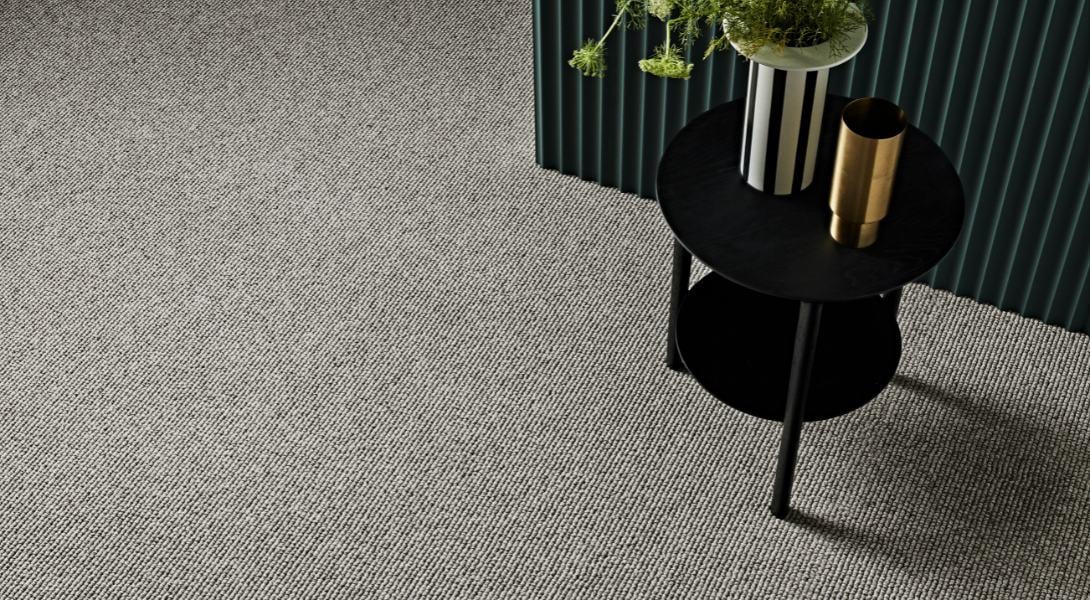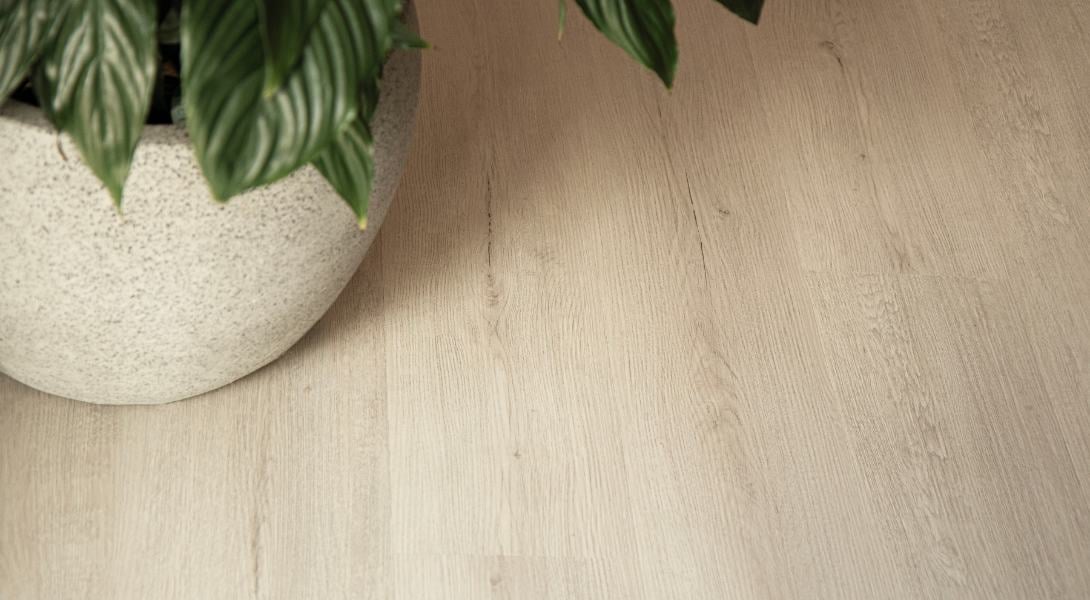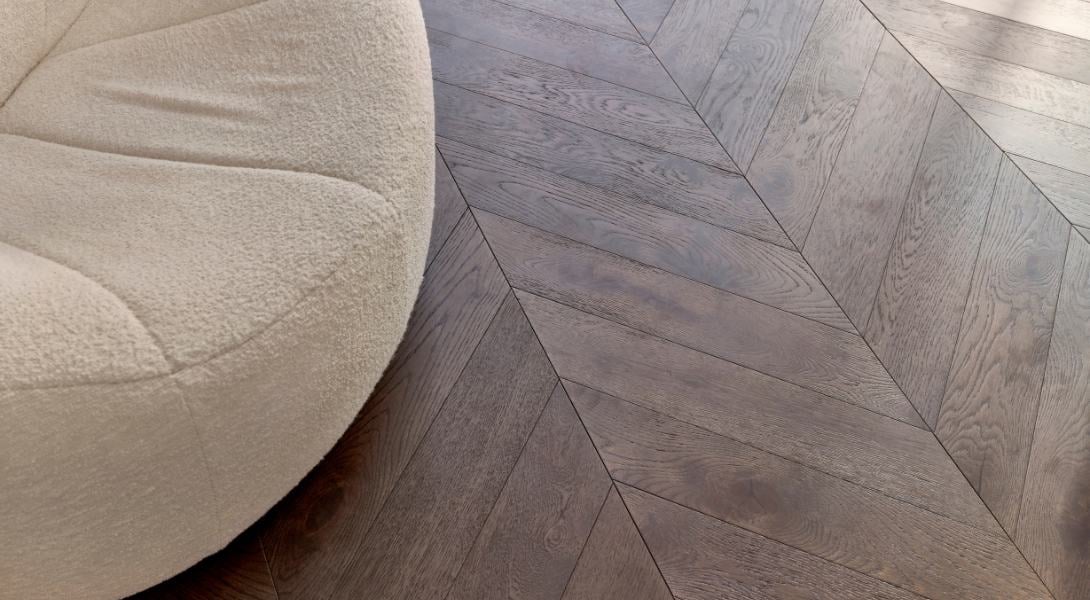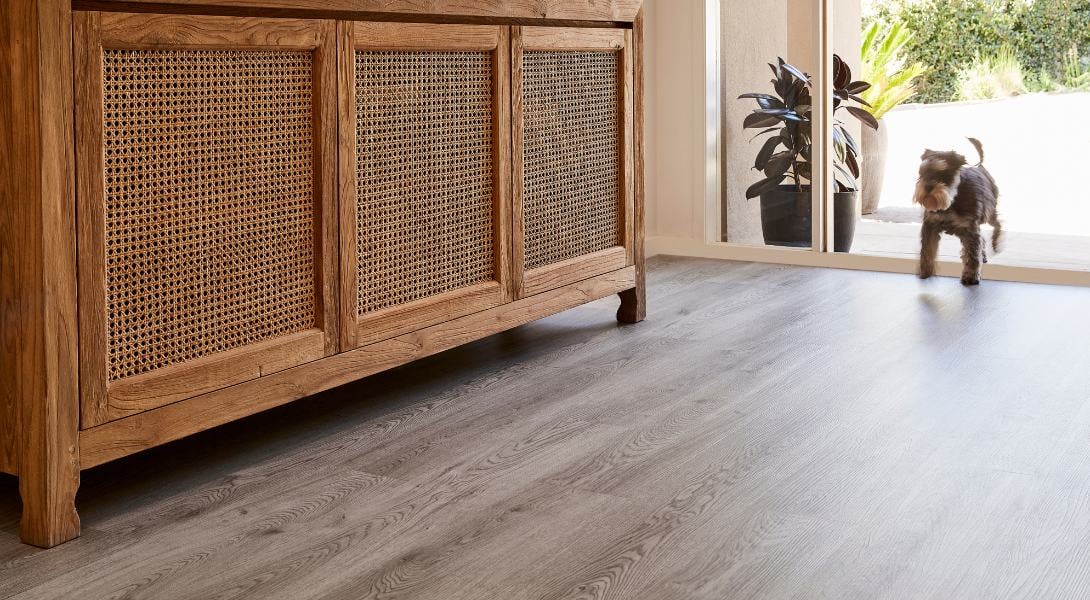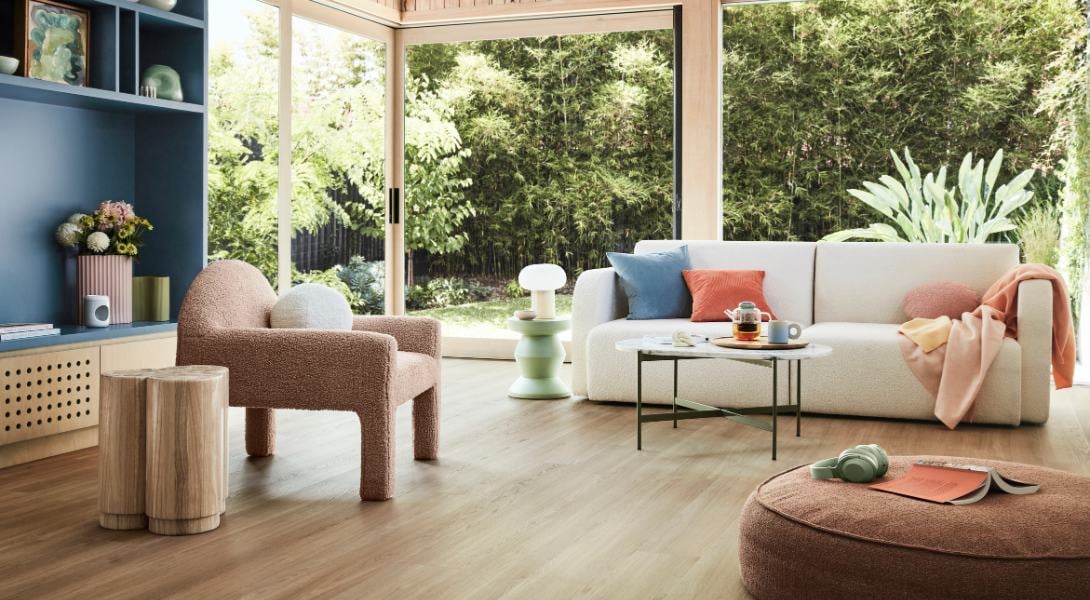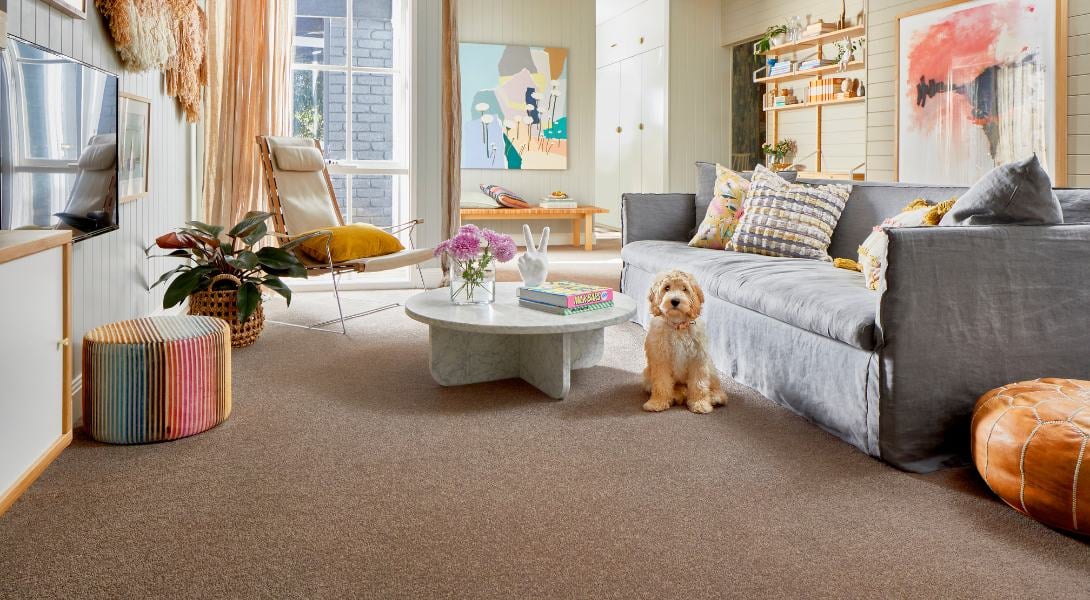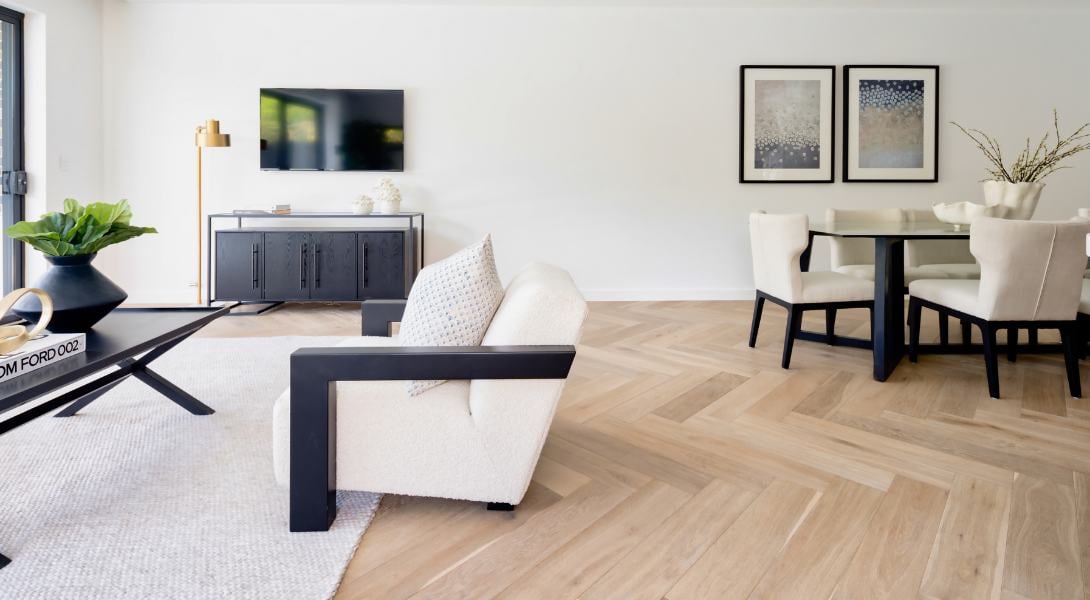The Ultimate Guide To Flooring For Your Home Renovation & Improvement
Updated:
Published:
Approximate Read Time: 14 minutes
Renovating a home can be a truly scary experience, especially if you have no idea where to begin. That's why the team at the Floorworld Blog has compiled this in-depth and comprehensive guide to help you with your flooring choices, so you have one less thing to worry about. Whether it's your first or your 100th home renovation project, discover the best flooring options for your next project. Plus, we'll share some design tips and discuss the advantages and disadvantages of specific flooring materials.
So, let's get started!
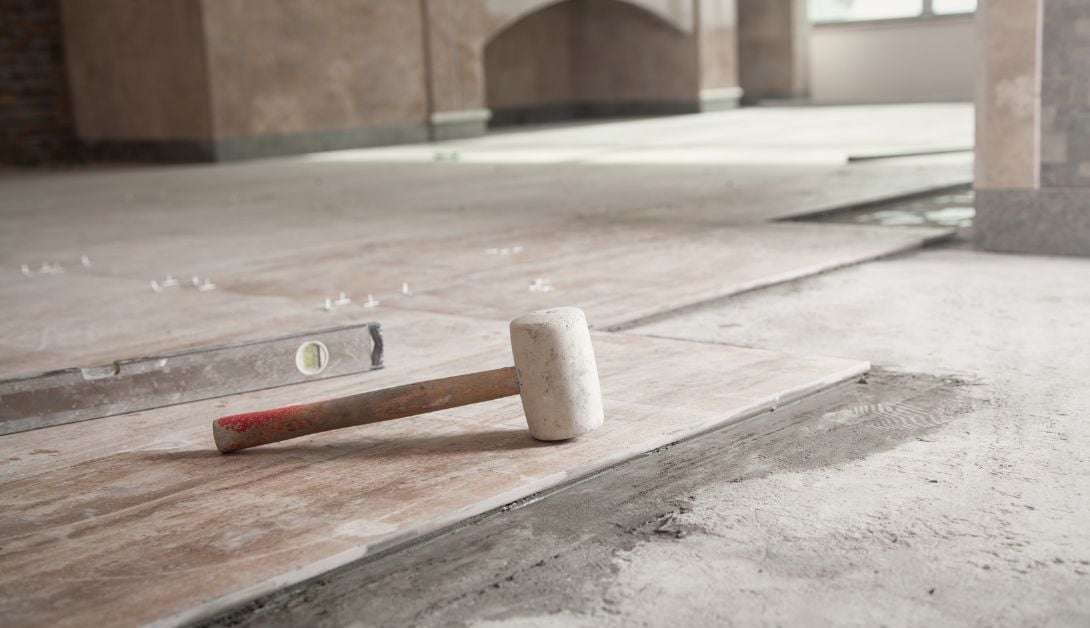
Table of Contents
1. Pros and Cons of different Flooring Materials
2. Choosing the Right Flooring for each room of your Home Renovation
3. Things to consider before Planning out your Home Renovation
4. How to plan and manage a Flooring Home Renovation: The step-by-step Guide
5. Things to watch out for in your Flooring Home Renovation
7. Flooring Home Renovation Conclusion
1. Pros and Cons of Different Flooring Materials
The first step when starting your next home renovation is choosing the right flooring material. This section will explore the pros and cons of different flooring options, such as timber/hardwood, hybrid, laminate, vinyl, tile, and carpet. Understanding the characteristics of each material will help you make an informed decision based on your preferences, budget, and lifestyle. So, let's dive in and discover the advantages and disadvantages of each flooring material.
Advantages of Carpet Flooring:
- Comfortable underfoot.
- Provides insulation and soundproofing.
- Wide variety of styles and colours suitable for pets, children, and allergies
- There is a wide range in costs, meaning there are options for any budget.
- Offers warmth in colder climates.
Disadvantages of Carpet Flooring:
- Prone to staining and soiling, causing fraying.
- Requires regular cleaning to maintain.
- Not suitable for wet areas.
- Can harbour allergens (or help with them, depending on the fibre)
- May require replacement sooner than hard flooring options.
For more on choosing the perfect carpet for your home, check out our blog post: Things to Look Out for When Buying Carpet for Your Home.
Advantages of Hybrid Flooring:
- Combines the best features of laminate and vinyl.
- Water-resistant and durable.
- Realistic appearance, able to imitate the look of wood or stone
- Easy to maintain.
- Many come with built-in underlay.
- Resistant to scratches.
Disadvantages of Hybrid Flooring:
- Higher cost compared to laminates and vinyls.
- Potentially more difficult to install as it may require adhesives
- Environmental concerns with materials and production
- Vulnerable to temperature changes.
- Requires careful cleaning.
To learn more about Hybrid Flooring, read our blog post: What is Hybrid Flooring?
Advantages of Laminate Flooring:
- Affordable and budget-friendly.
- Water-resistant and durable
- Easy to clean and maintain.
- Versatility in styles and colours and the ability to mimic the look of natural materials.
- Easy to install with DIY options
- Resistant to scratches and fade-resistant.
Disadvantages of Laminate Flooring:
- Prone to water damage, water resistant but not waterproof
- Cannot be refinished or repaired
- Hollow underfoot.
- Susceptible to dents and impacts
- Environmental concerns with materials and production
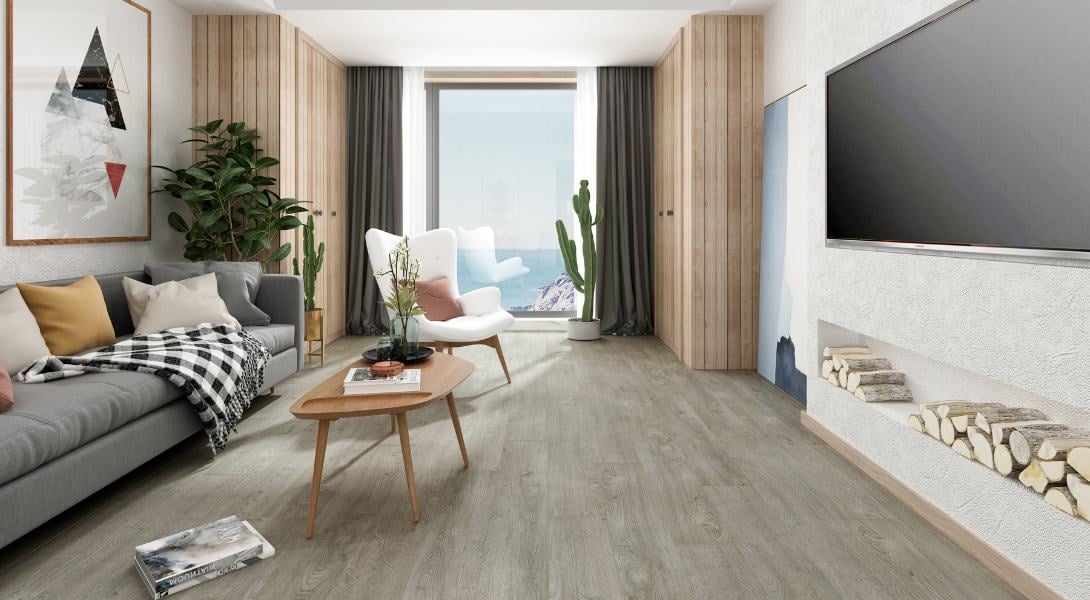
Advantages of Timber/Hardwood Flooring:
- Natural beauty with a timeless appearance.
- Variety of different species and types to choose from.
- Durable and long-lasting.
- Refinishable by sanding.
- Adds value to the home.
Disadvantages of Timber/Hardwood Flooring:
- High initial cost.
- Susceptible to scratching and dents.
- Requires maintenance.
- Not suitable for wet areas.
Advantages of Vinyl Flooring:
- Affordable and budget-friendly
- Durable and resistant to scratches, stains and impacts
- Water-resistant.
- Easy to maintain.
- Wide range of styles and varieties
- Comfortable underfoot.
- Recyclable
Disadvantages of Vinyl Flooring:
- Susceptible to fading.
- Not as long-lasting as natural materials like timber
- Limited repair options.
- Environmental concerns with materials and production
Advantages of Tile Flooring:
- Durable and resistant.
- Easy to clean.
- Available in various styles.
- Suitable for wet environments.
- Temperature regulation
- Hygienic
Disadvantages of Tile Flooring:
- Hard and cold underfoot
- Expensive
- Grout lines require maintenance.
- Costly and complex installation.
- Vulnerable to cracking.
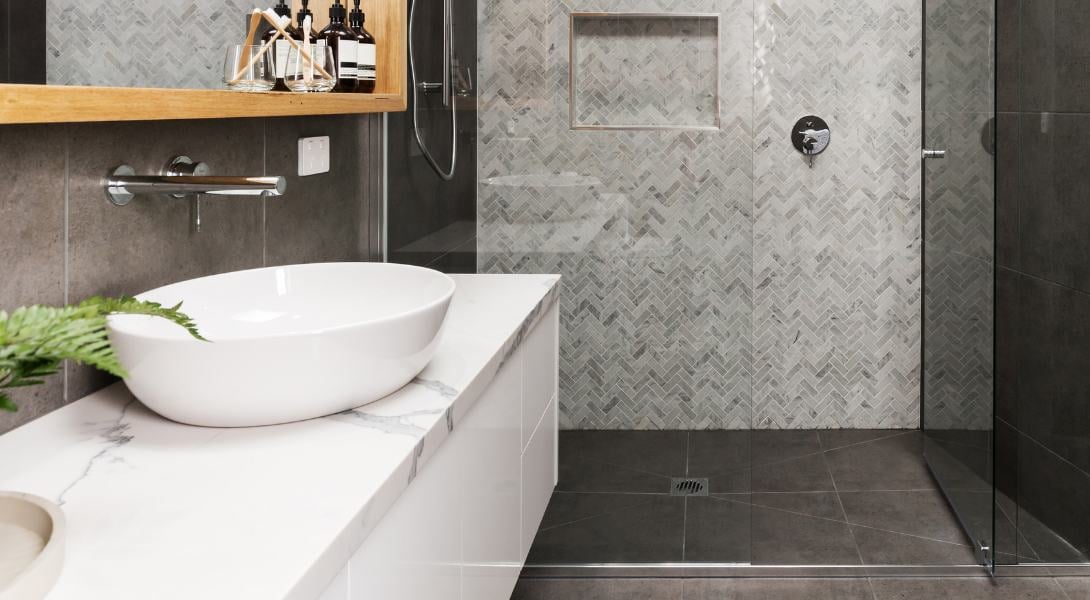
When selecting the perfect flooring for your home, carefully weigh these pros and cons to make an informed decision that suits your lifestyle and preferences.
2. Choosing the Right Flooring for Each Room of Your Home Renovation
Your rooms make up the essence of your home, so below, we discuss some of the popular and recommended choices for each room to help you make your decision.
Living Room
The living room is the heart of the home, and its flooring sets the tone for the space's ambience and functionality. Timber flooring stands out for its timeless appeal, infusing warmth and sophistication into the room. Alternatively, carpet offers plush comfort, ideal for creating a cozy atmosphere perfect for family gatherings and relaxation. Hybrid flooring, blending laminate durability with hardwood aesthetics, presents a versatile option for high-traffic households involving children, pets, or frequent visitors, ensuring style and resilience.
Kitchen
In the kitchen, durability, and practicality are paramount considerations. Opting for materials like porcelain tile or luxury vinyl plank (LVP) ensures resilience against spills, stains, and heavy foot traffic. Laminate flooring offers a budget-friendly alternative, boasting moisture-resistant properties suitable for the kitchen environment while maintaining a stylish appearance. Hybrid Flooring is also a popular option for something a bit more modern.
Bathroom
When revamping your bathroom, prioritize water-resistant flooring to withstand the humid environment and frequent exposure to moisture. Ceramic or porcelain tile, sheet vinyl, or vinyl plank flooring offers durability and easy maintenance, ensuring longevity and aesthetic appeal. Luxury laminate and hybrid flooring are also popular choices.
Bedroom
Transform your bedroom into a cozy retreat with the right flooring choice. Carpet flooring creates a soft and inviting atmosphere, offering warmth underfoot and sound insulation for enhanced comfort. Alternatively, hardwood/timber or laminate flooring exudes elegance while providing durability and minimal upkeep, ensuring a serene and stylish bedroom environment.
Home Office
The home office demands a flooring solution that blends functionality with style. Hardwood or engineered wood flooring adds sophistication and productivity-boosting ambience to the workspace. Carpet tiles offer versatility and sound absorption, facilitating easy replacement in high-traffic areas while maintaining an aesthetic appeal conducive to concentration and creativity.
If you need any inspiration for any of the rooms above, we have a whole collection of ideas to read and check out on our inspiration page!
3. Things to Consider Before Planning Out Your Home Renovation
Now that we've covered the details of flooring options and the rooms that align with them, it's important to ensure you have checked off all the considerations you may need before planning a home renovation project. In this section, we'll guide you through considerations you may or may not realise you need to watch out for before the planning stages so you know that you are making the proper first steps.
Understanding your Household Type: Children, Pets and Parties
Households are as unique as the people that make them up. That's why it's so crucial that you understand your household and those both coming and going within it on your floors.
Children are tornados of terror, leaving spills and toys in their wake. Consider flooring types that are either low-maintenance and easy to clean or soft and cushioned to protect them when they fall.
Pets of the fluffy variety can also cause scratches and shedding. Consider durable and scratch-resistant performance options that are easy to clean and vacuum.
For those of you seeking to frequently host parties or gatherings, durability and ease of cleaning are also vital to keeping up with all the extra foot traffic.
Sustainability
For those ecologically minded, the first thing you should consider for your latest flooring renovation is the choice of material. Wool carpets, timber harvested from sustainable forests, and bamboo floors are all excellent places to start, as they are all sourced from natural, renewable resources.
If your focus is more on the recyclability of materials, then underlays, cork and vinyl flooring all have recycling initiatives and organisations behind them.
The longevity of your flooring also plays a big part in reducing waste. Consider seeking more durable flooring options and carefully maintaining them to ensure they last for years, thus reducing the need to replace and waste.
For more on how sustainability plays a role in your Flooring, check out our Ultimate Eco-Friendly Sustainable Flooring Guide

Climate and Seasons
Depending on where you live, your local climate and the changing seasons can have differing impacts on your flooring renovation choices. Changes in the humidity and the severity of the sun affect some flooring options more than others, and it is important to be aware when making a decision.
An example is how a climate with extreme temperature fluctuations between hot summers and cold winters can cause certain flooring materials like laminates and timber to expand and contract, warping the material over time. High humidity levels in your local environment can also cause the buildup of mould and mildew or even, in some cases, cause your flooring to warp or swell.
Of course, all of this can be remedied with careful maintenance and preparation, but it is essential to be aware and seek the advice of experts (such as our Floorworld Stores) if possible.
For Australians, you can read more about how the seasons affect your floors in our blog post: Tips for Navigating the Australian Climate: Flooring for Every Season

Soundproofing
For aspiring musicians, party hosts, home cinema owners and those who maybe want a bit of quiet, your choice of floor can directly impact how sound travels within your home.
Flooring materials such as carpet and cork absorb and reduce overall sound excellently. Alternatively, you can also elect to have an underlay laid beneath your flooring, if able, to add extra padding to absorb sounds without sacrificing too many flooring options.
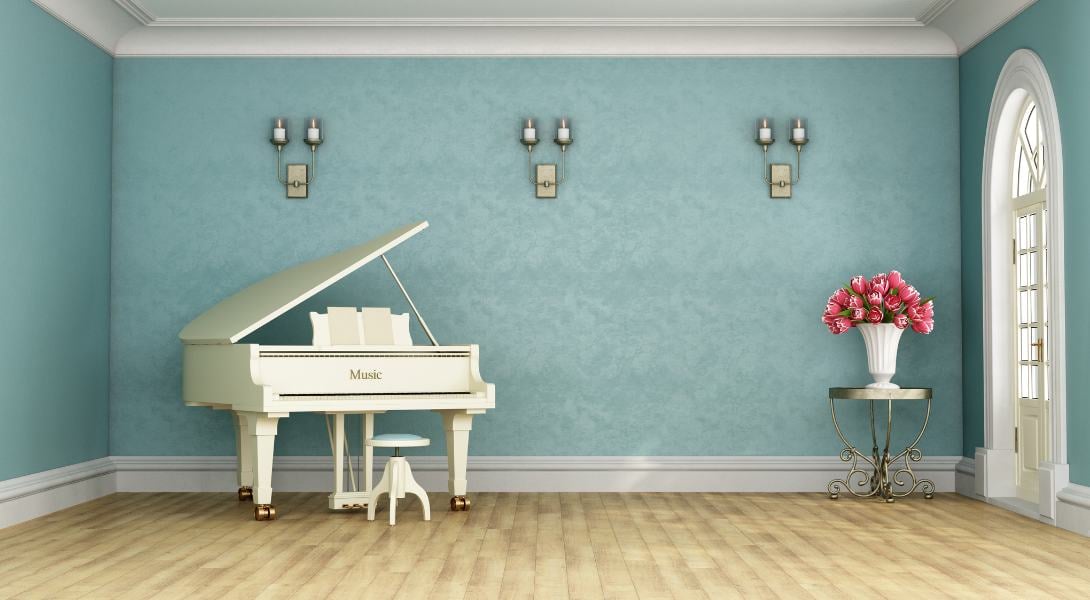
4. How to Plan and Manage a Flooring Home Renovation: the Step-By-Step Guide
Now that we have gone through all the considerations, from kids and pets to climate and soundproofing needs, the next phase is actually planning and organizing your flooring home renovation. As flooring is usually one of the last parts of your home being installed, it is essential to get it just right, as you will be living with it for many years to come.
We understand that planning can be complex and daunting, so below is a step-by-step guide to help you get started.
Step 1. Understand What You Want, Be Inspired
Knowing what you want your space to look like is essential for planning and organizing any home design. Inspiration can take many forms, and we recommend combining different sources to ensure the flooring you get perfectly suits the aesthetic you want in your home.
For those seeking a more tactile guided experience, we would encourage them to visit some of your local flooring stores (especially if that store happens to be Floorworld) to see what products are on offer, with sales staff who should hopefully be able to advise you on what suits your needs.
Otherwise, searching online through social media, designer boards such as Pinterest, and reading blog posts can be a great way to start! For those of you wanting a tailored professional opinion, consider contracting a professional interior designer to help.
For more inspiration, you can grab our eBook or check out our Flooring Essentials Series: The Ultimate Guide to Flooring Interior Design Trends.
Step 2. Measure Your Space
Once you know what you want, the next step is to measure your space. You can do this on your own, but for peace of mind and to ensure you have accounted for everything, we recommend contacting flooring stores such as Floorworld for a more accurate measurement. They offer a quotation for your room/home free of charge.
In especially large cases or for fresh new builds, you may be required to have a builder come out to make blueprints for your job.
Step 3. Work out a Timeline
Work out a detailed timeline from beginning to end, outlining each phase required, such as demolition, construction, installation and the finishing touch. For accuracy, we highly recommend contacting all the required personnel and installers, be it a builder or Floorworld store, well in advance, as they will generally have jobs scheduled well in advance. This is particularly important as installers need to coordinate your renovation with each other to ensure all the essentials are ready before work can be done. An example of this is flooring installers needing to account for paint drying and weather conditions.
Once a job has been scheduled, the timeframe can be as short as a few hours for a single room to one or two weeks for the whole home, depending on everything going according to plan. That's just for the flooring alone!
Step 4. Calculate Your Budget
Budgets can determine the options available to you in a home renovation. Work out what you are willing to spend and allocate it to materials, labour, and other expenses, including something for any unexpected complications.
While most quotations will try to account for external factors such as pulling up old flooring, levelling, and moving furniture, it is very important that you inform your builder or flooring store of your needs as soon as possible and be aware of any additional costs that may arise.
Flooring can be expensive, so you may also consider financing options; you can discuss this directly with your flooring store or builder.

Step 5. Get the Right Permits and Keep Your Documents in Order
Depending on your local council, you may need to seek approval from the local authorities for permits required for compliance. For safekeeping, it is important to keep these permits and any other documentation, such as receipts, contracts, and warranties you have received from those involved in the renovations, just in case you need to reference anything after or during the renovation.
Step 6. Organising Your Renovations and Contractors
As mentioned prior, flooring is normally one of the last steps in a home renovation. This means having a clear schedule and timeline for your contractors and their jobs is paramount to any successful renovation. Plan out what jobs should be completed before others, and try to schedule them ahead of time with reputable contractors, making sure to get confirmation on approximate timelines and any other factors they may need to be completed prior so that you can adapt to any external issues that may arise.
It can sometimes be hard to find "reputable" contractors, relying a lot on word of mouth and reviews, but most flooring stores, such as Floorworld, will already have a list of contractors they have worked with that they can trust.
Step 7. Prepare Your Home
Ensure you have cleared out any furniture, belongings or clutter in the renovation space. You may also need to take steps to protect other parts of your home from the dust and damage that may arise during the renovation process.
For bigger jobs, you may need to organise another temporary residence to stay in until the renovation is complete.
Step 8. Monitor and Prepare to Adapt
Things don't always go perfectly, but the best you can do is ensure you are up to date with everything happening. You can use project management tools or simply inspect the work done to address any concerns that may arise. Communication is key, so make sure to keep up to date with contractors as work is being done to keep to your timeline and ensure it meets quality standards.
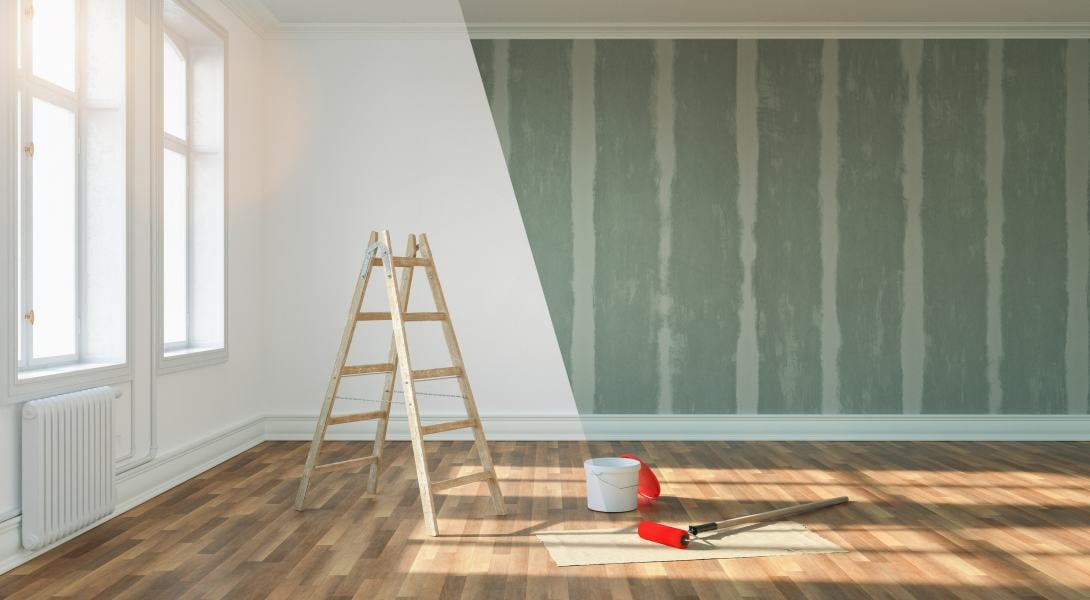
5. Things to Watch Out For in Your Flooring Home Renovation
While home renovation can be an exciting process, there are certain things you need to watch out for to avoid common pitfalls. This section will highlight some important considerations, such as permits and regulations, unexpected costs, and potential disruptions to your daily life. By being aware of these potential challenges, you'll be better prepared to navigate your renovation journey smoothly and minimize unnecessary stress.
Ensure you have the correct permits: Contact the local authorities and inform them about your renovations.
Ensure your contractors are not waiting on each other: Make sure that the work is done in the correct order and given enough time to allow other contractors to begin. One example is waiting for the paint to dry before flooring installers can begin.
Understand your subfloor condition: Depending on the status of your subfloor, the levelling process can be much more expensive and time-consuming than anticipated.
Stick to your budget: Create a realistic budget that accounts for as many things as possible, including unexpected issues that may arise.
Maintain an accurate, flexible timeline: Try to anticipate any delays caused by external issues such as stock or the weather. Make sure to schedule and follow up on all your contractors.
Use reputable and experienced contractors: To ensure a proper renovation, try to find the best contractors for your jobs through online research, word of mouth, or working with stores like Floorworld, which will already have their own lists.
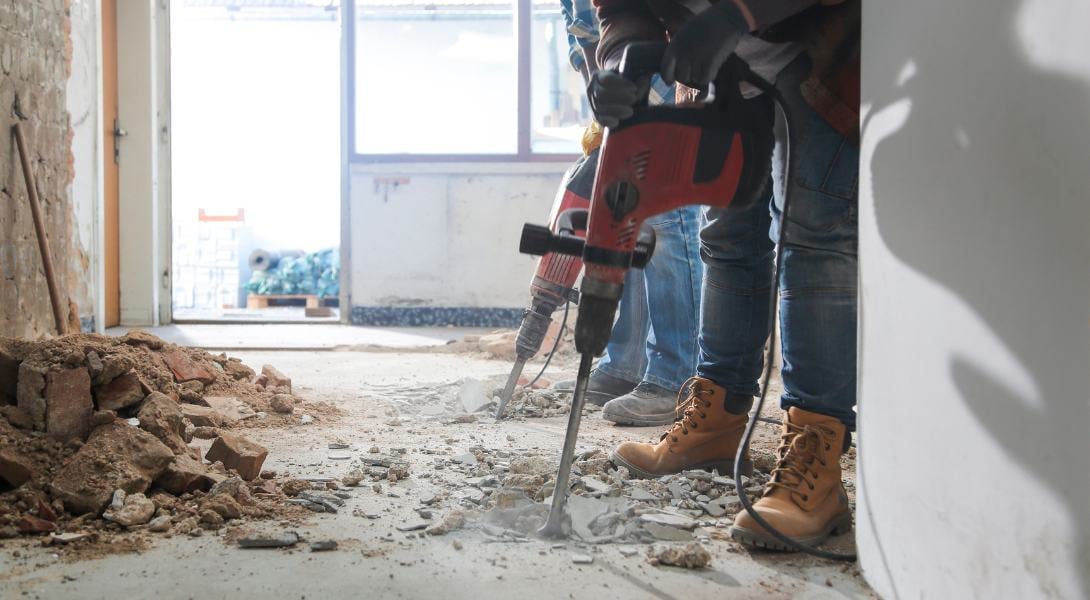
6. Frequently Asked Questions
How much does a home renovation cost?
It depends on the job's scope and the type of rooms being renovated. It can cost anywhere from $20,000 for a single room to $300,000 and over for a whole home. Generally, the average Australian renovation costs around $71,000
How long will my flooring renovation take?
Specifically, flooring can take a few hours for a single room and one to two weeks for a whole home.
How much does it cost to get renovation plans drawn up?
A house plan will cost between $3,000 and $15,000, depending on the scope of the job.
How much does a bathroom renovation cost?
A normal mid-range renovation costs around $15,000 to $30,000, but a luxury renovation will cost upwards of $30,000.
How much does a kitchen renovation cost?
A normal mid-range renovation costs around $20,000 to $40,000, but a luxury renovation will cost upwards of $45,000.
How much does a living room renovation cost?
Depending on the scope of the renovation, it will generally cost around $10,000 to $40,000
How to plan a renovation?
We have the complete step-by-step guide above, but generally, Understand what you want, work out a timeline, calculate your budget, check for permits, organise your contractors, prepare your home, monitor the renovation, and adapt on the fly.
What are the best flooring options for high-traffic areas?
At Floorworld, we recommend durable options like laminate, vinyl, and engineered hardwood for high-traffic areas. These materials withstand wear and tear while maintaining their aesthetic appeal.
Can different types of flooring be used in combination with open-plan layouts?
Yes, combining different flooring types can define spaces without walls. For open-plan layouts, transition strips or matching colour tones can seamlessly integrate different materials like hardwood and carpet.
How do I choose the flooring that complements the style of my home?
Consider the overall theme of your home. Floorworld offers a range of options from classic timber to modern vinyl that can enhance any style, from rustic to contemporary.
How do I maintain my new flooring to ensure its longevity?
Regular cleaning and immediate attention to spills are key. Each material has specific care requirements, ensuring your flooring remains in excellent condition. Read our ebook on Caring for Your Floors for more details.
What flooring options are best for homes with pets and children?
Vinyl and laminate flooring are excellent for homes with pets and children due to their durability and ease of maintenance. These options resist scratches and spills, making clean-up a breeze.
How can I maximize the feeling of space with flooring choices?
Light-coloured flooring and larger plank sizes can make rooms appear more spacious. To visually expand the space, consider the direction of plank installation.
7. Flooring Home Renovation Conclusion
Home renovations can be challenging, so we at the Floorworld Blog Team hope you found this guide helpful. Feel free to visit us at any of our Floorworld Stores for more expert advice.
For inspiration and ideas on designing your home renovation, check out our Inspiration page or read our Flooring Essentials Series article: The Ultimate Guide to Interior Design Trends.
For more on flooring renovations, trends, and sustainability, download our eBook by filling out the form below.

